How to grow runner beans in a grow bag? This can be a major challenge for most people. But with the right strategy, you can yield amazing results. The amount of water, type of soil, nutrients in the soil, quantity of fertilizer, type of grow bags/pot, and temperature are some important factors to grow runner beans.
In this article, we have discussed the best ways to grow runner beans in Grow Bags and in a pot, and their important factors to consider. Read on!
Contents
Why Grow Bags Make Sense
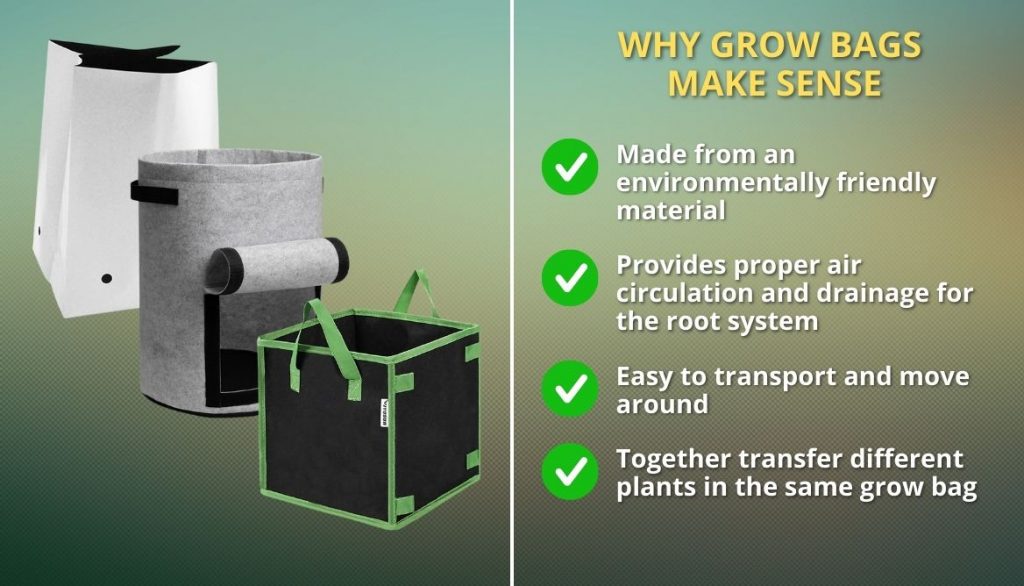
Growing bags are an efficient way of growing plants and vegetables. They are used for urban gardens, rooftop gardens, and small-scale indoor gardening.
Let’s see why should one use Grow Bags:
- They are made from an environmentally friendly material that provides proper air circulation and drainage for the root system.
- They are also easy to transport and move around.
- Growing bags make it easier to practice companion planting. You can easily transfer different plants together in the same bag.
Runner Beans Can Grow “Up”
Runner beans can be grown in the most creative ways. They are the fastest-growing plants you can find. While most greenery grows and sprouts horizontally, runner beans can grow upwards and this is what makes them unique.
It is popular among gardening enthusiasts as they are easy to grow, and it is a high-yielding plant.
Best Varieties Of Runner Bean
Photo | Type | Key Characteristic | Ideal for |
Runner Bean "Hestia" | Dwarf Variety | Suitable for small- sized gardens and easily grown in patio containers or any large container | |
Runner Bean "Benchmaster" | Excellent Exhibition Bean | Great for winning competitions or upgrading the aesthetics of your garden | |
Runner Bean "Scarlet Emperor" | Impressive Taste | Savory and mouthwatering variety that is famous for its taste | |
Runner Bean "Snowstorm" and Runner Bean "Firestorm" | Predominantly Self-Setting | The type that can survive even the toughest weather and poor environmental conditions | |
Runner Bean "Tenderstar" and Runner Bean "St. George" | Pink Colored Flowers/Dual Color Flowers | High-yielding and beautiful border for your garden |
Consider These Factors To Get Started With Grow Bag Beans
To get started with growing runner beans in grow bags, consider the following factors:
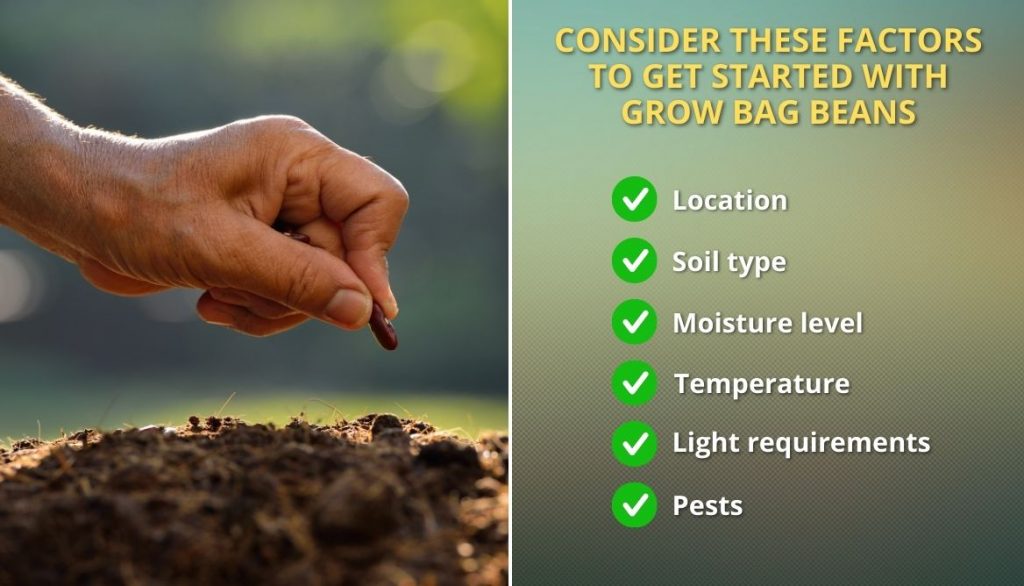
1. Location
This determines how much sunlight and wind the runner beans will receive. All varieties of beans love sunlight.
If your outdoor area has limited space then the best option is to grow them in growing bags and set them in a place that has sufficient sunlight. You can even set them on the patio and perform container gardening.
2. Soil Type And Moisture Level
Well-drained and high-nutrient soil is important as runner beans need the right combination of water and nutrients to grow. Adding manure or organic matter to the soil is a plus for plant growth.
3. Temperature
The temperature should be kept at a steady level, as too much heat or cold can cause problems. The optimal temperature range to grow the seeds inside a grow bag is 21-32°C (70-90°F).
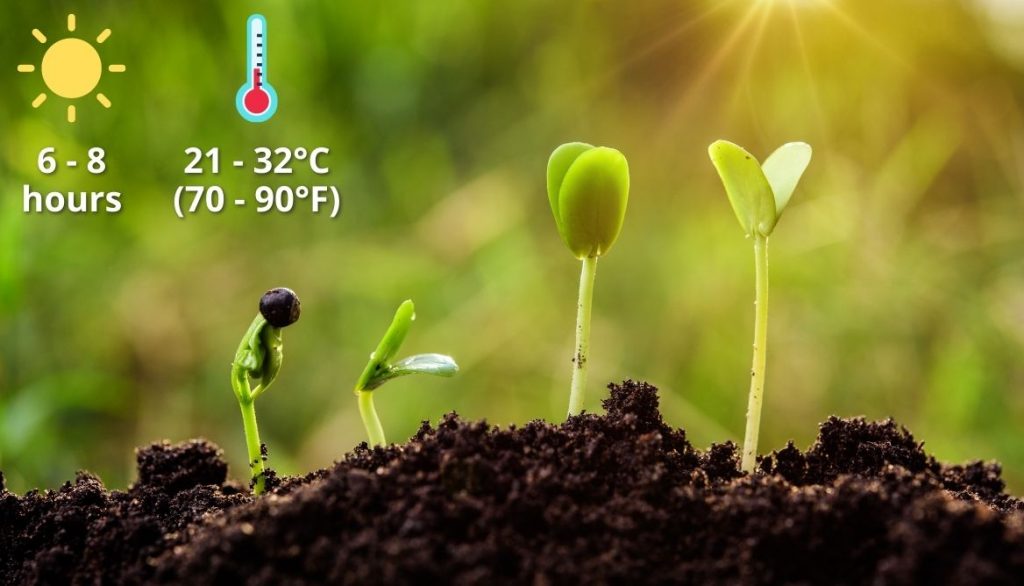
4. Light
Lighting requirements may vary depending on the type of runner bean you are growing. Ideally, 6 – 8 hours of sunlight is mandatory for the best growth.
5. Pests
Be sure to monitor for pests and take the necessary steps like using an insecticidal spray and covering beans to keep pests away. Common pests are flea beetles, aphids, Mexican bean beetles, leafhoppers, mites, cucumber beetles, and slugs.
To make a pesticide mix, you need to mix one part of the pesticide with 4 parts of water and spray even layers on the runner beans to get rid of any pest infestation.
Other Key Factors To Keep In Mind
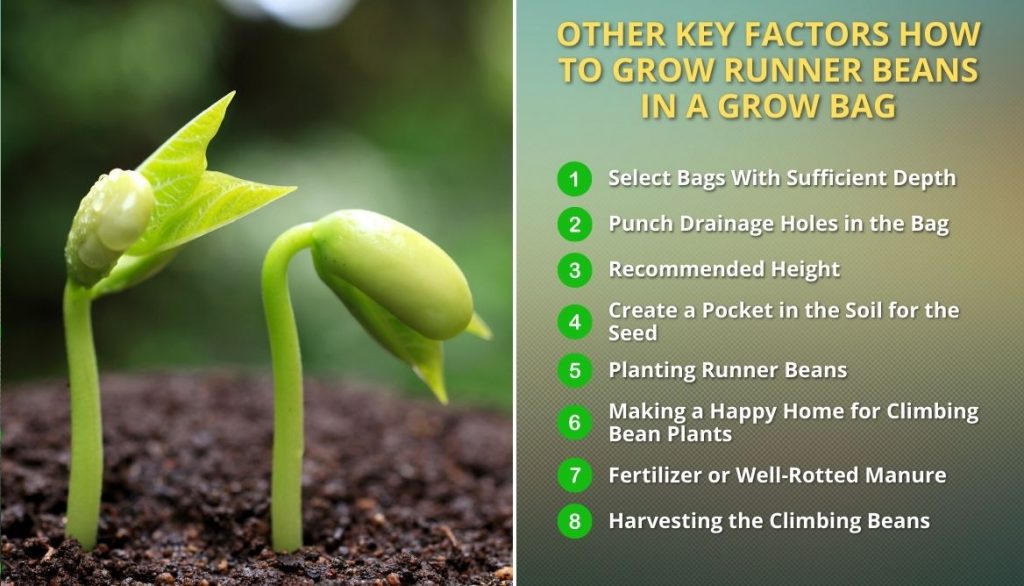
Some additional factors are mentioned below in detail!
1. Select Bags With Sufficient Depth
When using grow bags, ensure that it has ample space for root growth. An easy rule to remember is to estimate 5 gallons of topsoil for every bean plant in the pot.
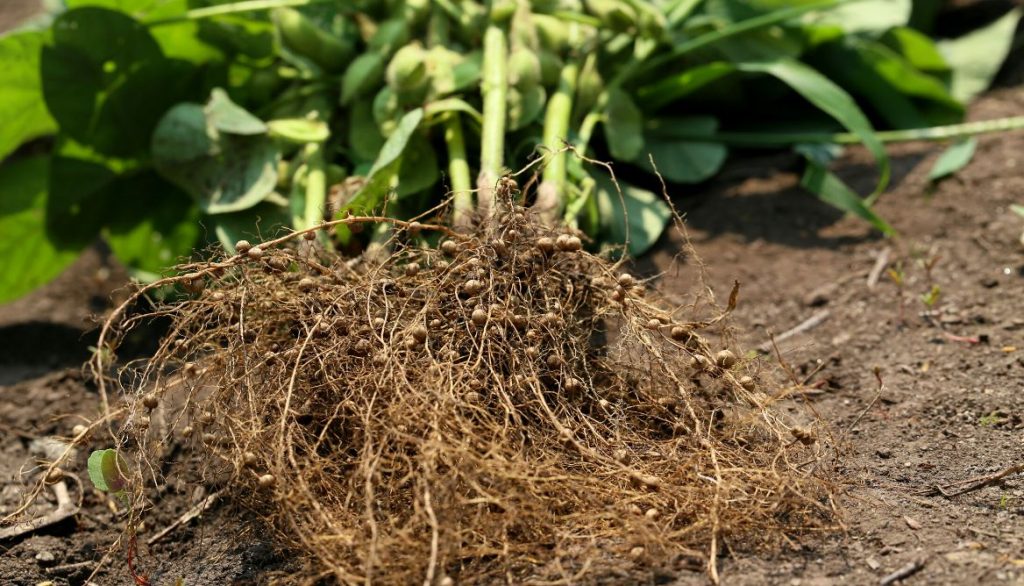
Sometimes the plant roots will turn at the bottom (a behavior called J-Rooting) and go in the direction of nutrients and water. In such a scenario, the roots also need space to move around in search of food for the plant.
Grow bags must be double the depth of the pot if you plan to put runner beans in them.
2. Punch Drainage Holes In The Bag
Use a pointed gardening tool or an ice pick to punch some holes at the bottom of the grow bag. Be careful not to punch large holes as the soil might also drain out after watering the plant.
The holes help excess water to flow through the grow bags. Punch enough holes so that water does not collect at the bottom of the bag instead moistens the soil and flows out.
3. Recommended Height
Excess water needs a drainage path out of a “grow bag”. It will exit from the punch hole that you have made at the bottom of the bag. The weight of the soil might close off the exit so you need to elevate the bag.
Either use a wheeled plant carrier or simply set a block of wood or bricks to make space under the bag for water to pass through.
Check out this video for DIY bags to learn more.
4. Create A Pocket In The Soil For The Seed
Many gardeners often skip this crucial step. You need to make enough space for the runner bean seed to set in the soil. Use a garden trowel or your hand to dig a 2×2-inch pocket into the soil for an individual seed.
5. Planting Runner Beans
You can plant the runner bean seedlings two inches deep of topsoil and expect them to grow in a few weeks. There are no specific or special requirements for the pre-germination stage of the runner beans. Only keep them safe from extreme cold temperatures and maintain watering. Here are some factors to keep in mind!
- Keep an eye on signs of growth of the plant.
- Ensure that the soil is rich with nutrients by adding organic matter or fertilizer.
- Avoid growing more than one runner bean in a single grow bag.
- It is easier to maintain soil and water measurements for one plant and you will also avoid the problem of both starving each other.
- Runner beans never have the problem of getting nutrients as they can convert atmospheric nitrogen into their food source.
6. Making A Happy Home For Climbing Bean Plants
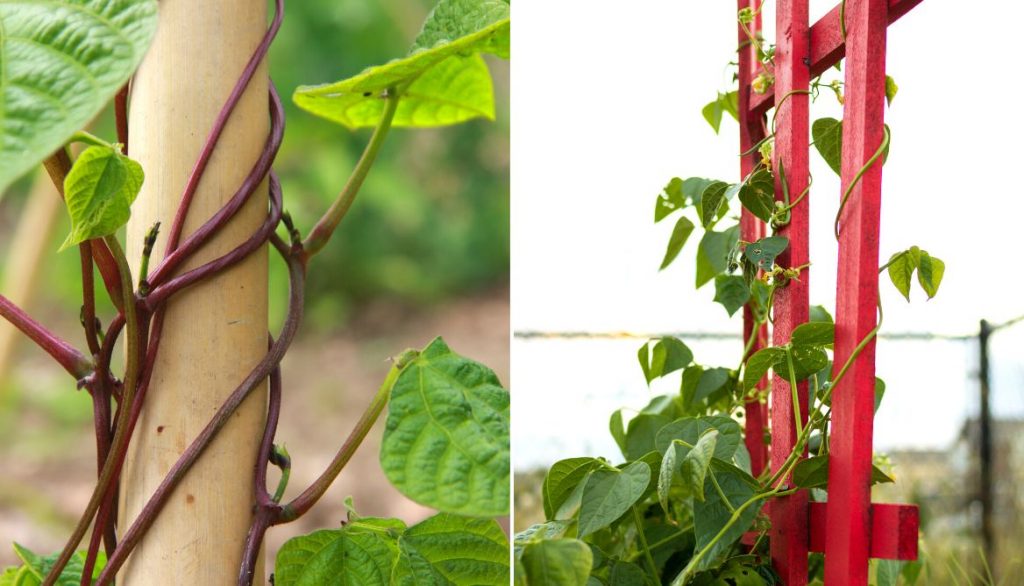
Runner beans are highly adaptive to their environment but they need a certain amount of support to climb up. You can provide it with a post, canes, stake, fence, trellis, or vine trainers to help them move up.
Note: Check the climbing structure thoroughly for its structural integrity. Ensure that strong winds do not break down or topple the structure.
7. Fertilizer Or Well-Rotted Manure
Use high-quality compost and maintain the soil at all times. Compost is the safest, most natural, recyclable, and chemical-free way to enrich the soil. It can be made from several sources of decomposing organic materials. Here are some ways:
- Vegetable peels.
- Food leftovers.
- Dead leaves from your garden.
It also adds several important nutrients to the soil that the plant needs. You can even use well-rotted manure as an alternative if you run out of fertilizer. Here are some factors to consider:
- Professional gardeners will always recommend a 10-10-10 ratio when maintaining the soil.
- It means 10 parts nitrogen, potassium, and phosphorus.
- Excess watering or rainfall can drain out large amounts of nutrients.
- Always check the soil and plant condition for signs of depletion.
Note: Always water the plant with ample water when you add fertilizer to distribute those nutrients evenly in the soil.
Check out this video for further clarification.
8. Harvesting The Climbing Beans
Eight inches in length is the ideal size for a runner bean to be harvested. Make sure to:
- You have to check the plumpness of the bean for the right texture.
- Once the harvesting begins, you need to be consistent in the process to get a good crop.
- Pick the green beans every 2 to 3 days without skipping the cycle.
Note: This boosts the production of the beans and they grow even more succulent pods. If you do not pick the green beans on time then the beans will become longer and much harder in texture which is not ideal for cooking.
Best Way To Grow Runner Beans
The ideal growing environment for runner beans is rich in nutrients loamy and well-drained soil. You do not want the soil to be sandy as it will lose moisture quickly. Adding organic matter can aid in boosting the growth of plants and holding extra moisture.
How To Grow Runner Beans In A Grow Bag
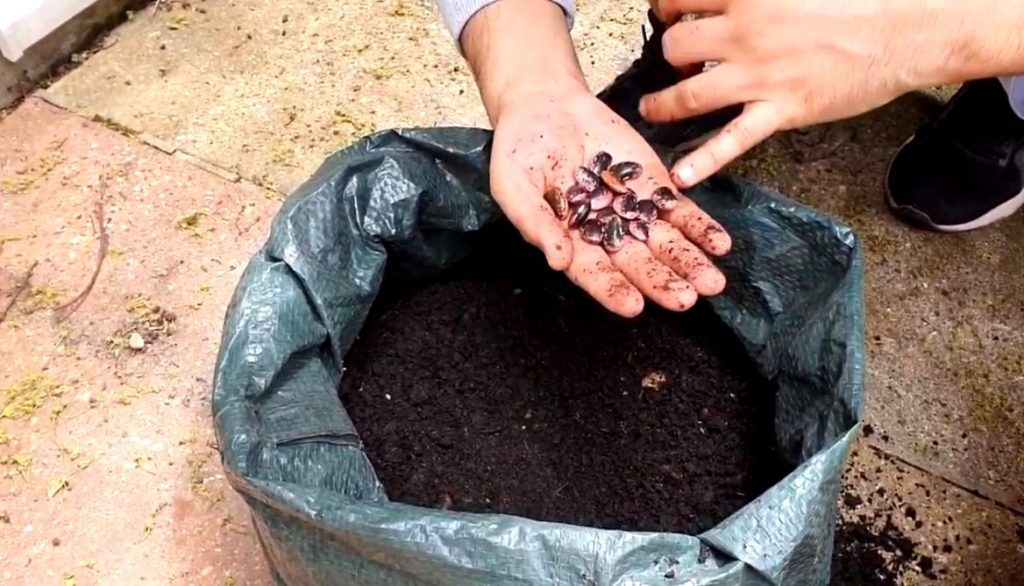
The best way to grow runner beans is to plant them in a sunny spot with well-draining soil and adequate space between plants. Here are the steps:
- Choose a sunny plot of land and prepare the soil in a grow bag by turning it over and adding compost.
- Sow the seed directly in the soil, spacing them at least 6 inches away from the wall of the grow bag and 2 inches deep in the soil.
- Water the seedlings deeply once or twice per week, depending on the weather conditions.
- Fertilize the soil every few weeks with a balanced fertilizer.
- Support the growing plants with stakes or trellises and keep them properly pruned.
- Harvest the pods when they are around 8-10 inches long and enjoy your enjoy fresh runner.
What Month Do You Plant Runner Beans
We can plant runner beans based on the region. The following table has all the details.
Region | Months |
Northern | Between April and June |
Southern | Between September and October |
In a warmer climate, you will notice faster growth. As early spring approaches, the plants growing will start to slow down their growth speed.
Till then you need to train the plant to become habitual of the climatic conditions around it and provide it with a suitable environment to survive.
What Size Grow Bag For Runner Beans?
It all depends on the number of runner beans you are growing. But, you can also use different-sized bags as mentioned below!
Size Of The Grow Bag
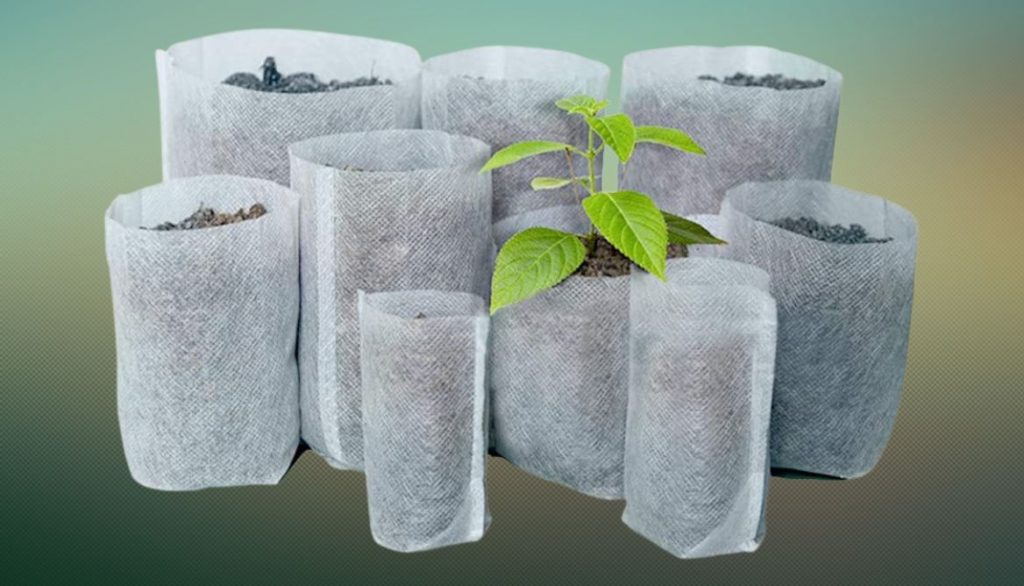
For runner beans, it is best to use a grow bag that is at least 8 inches deep and 12 inches in diameter. Although, the most ideal size that fits any requirements is a grow bag with dimensions 18 inches deep and 36 inches wide.
This will provide the green beans with plenty of room to grow and the proper environment for their roots to thrive. Additionally, make sure your grow bag has plenty of drainage holes so excess water can escape.
Load Capacity Of The Grow Bag
The best size grows bag to use for growing runner beans will depend on the number of plants you are growing. Generally, a grow bag with a capacity of 40-50 liters is suitable for growing up to four plants. If you are planting more than four plants, you’ll need a larger grow bag with a capacity of 80-100 liters.
Growing Runner Beans In Pots
Growing runner beans from seed are easy. Here is a step-by-step guide on how to do it:
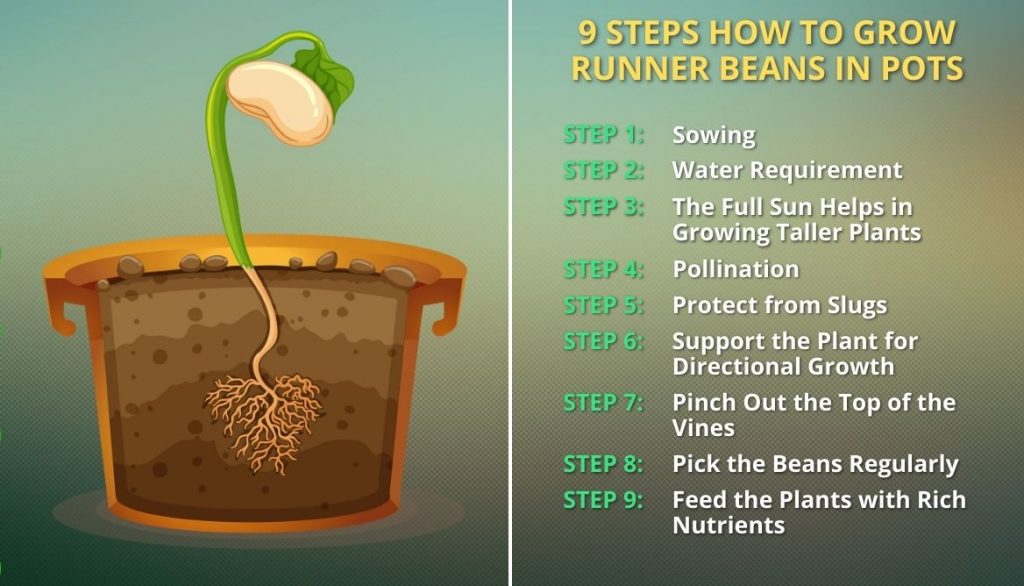
Step 1: Sowing
Prepare your grow bag by filling it with potting soil and fertilizer. Plant your bean seeds 1-2 inches deep and cover them with soil. Check out this video for more information.
Step 2: Water Requirement
Runner beans need plenty of water to grow and produce fruit. Make sure to water your plants regularly, as not enough water can cause the beans to dry out, shrivel, and die.
To grow bean plants, you need to use a large pot. A pot of almost 20 litres will do the job but using a pot of about 40-50 litres will be the best choice. Using a big pot will be an advantage as it can hold more water. Ensure to keep the pot watered at all times, especially during hot or windy days.
Step 3: The Full Sun Helps In Growing Taller Plants
Place the grow bag in an area that gets plenty of sunshine and warm water regularly. They need about 5 to 6 hours of sun exposure or more every day to grow well and bear fruit.
Note: The best strategy is to let the runner beans climb up toward places with more sunlight.
Step 4: Pollination
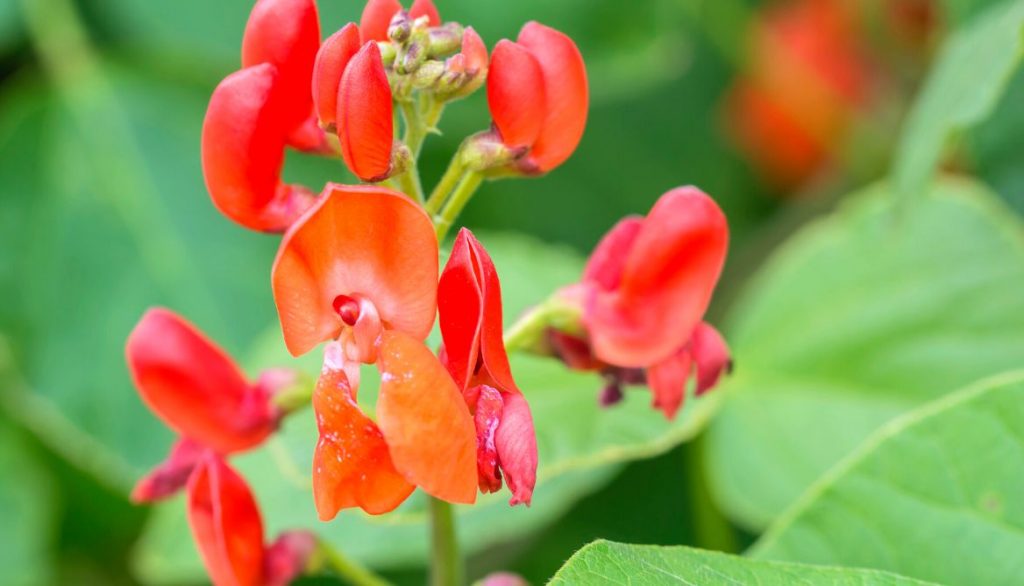
Runner beans are self-pollinating, meaning that the runner bean flowers are capable of fertilizing themselves. However, if plants are planted close together, there may be some cross-pollination between the different varieties.
This can lead to hybrid runner beans with combined characteristics from both parent runner bean plants.
Note: You can prevent cross-pollination by planting different types of runner beans at least two to three feet apart.
Step 5: Protect From Slugs
Monitor for pests and take steps to keep them away. The best way to protect runner beans from pests is to practice preventative measures such as crop rotation and companion planting. Keep in mind to:
- You should also inspect your plants regularly for any signs of pests, such as dark spots or chewed leaves.
- If you identify any pests, take steps to remove them, such as using bird netting or a soap-based insecticide solution.
- Be sure to keep the area around your plants clean and free of debris as this will discourage pests from taking up residence.
- You can even cut empty beverage bottles into half and put them around each seedling as a protective covering.
Step 6: Support The Plant For Directional Growth
Runner beans can grow quite tall and need to be supported as they grow. The best way to provide additional support is by using stakes or a trellis. Place the stakes or trellis into the soil near the plants, and tie the vines to it as they grow. Learn more here:
Long branches or canes can also be used to let the runner bean plant grow next to it and climb it. Canes are strong and sturdy.
This will help keep the plants off the ground, and will also provide additional stability and prevent them from toppling over in strong winds.
Note: You can even be creative and grow runner beans in two or more pots to create arches patterns or designs with ease.
Step 7: Pinch Out The Top Of The Vines
Once the runner beans have reached the top of the branch, cane, or the structure you have built for it to climb, pinch the tips of the vines. This will result in additional runner bean shoots to grow and climb thus providing more beans for you to harvest.
Step 8: Pick The Beans Regularly
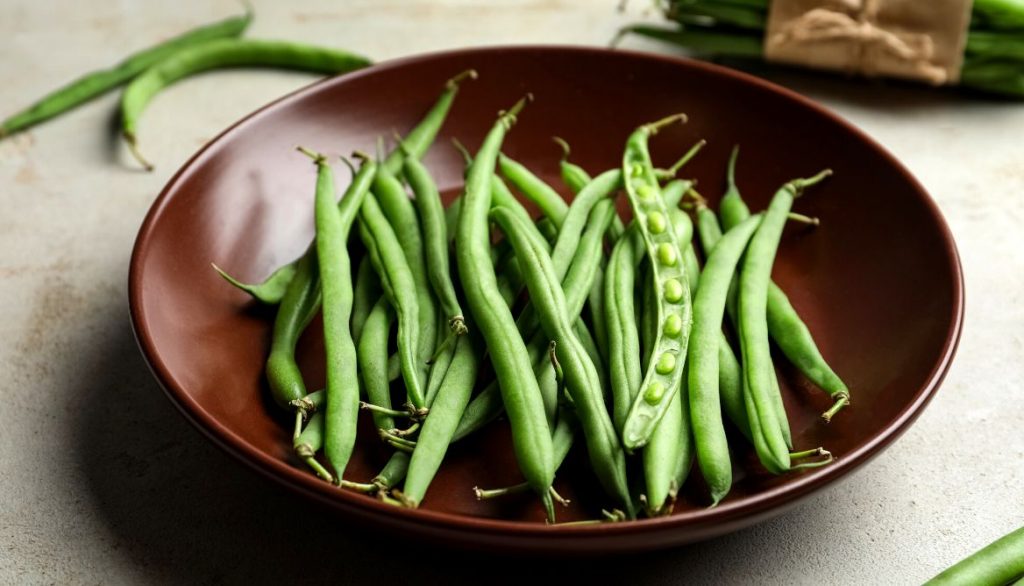
The easiest strategy to get more runner beans is to regularly pick the ripe ones. The plant will grow even more and much faster. Picking smaller–sized beans is a smart way to get tasty and tender ones.
Step 9: Feed The Plants With Rich Nutrients
Getting more harvest is extra rewarding and to do this you need to give the plant liquid tomato feed. Liquid feed can be given two or three times a week after the plant shows signs of flowering.
Why Do Runner Beans Fail To Set Pods?
Runner beans are some of the most famous gardening plants in the UK. Although it is very rare for them to face any problems at times they may fail to produce pods even during the early season. Below are some of the most common reasons for such behavior of the plants:
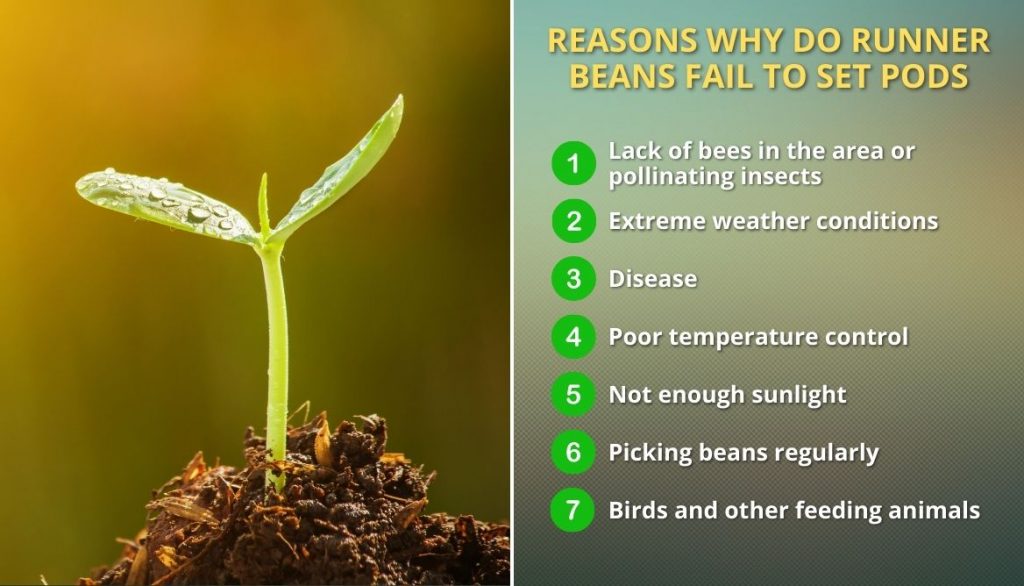
1. Lack Of Bees In The Area Or Pollinating Insects
In extremely cold conditions, the insects that pollinate the plants cannot survive. This may result in slow-growing beans or the spread of the vines.
2. Extreme Weather Conditions
High temperatures and lack of watering may have a major effect on the plant. The runner beans need a sufficient amount of moisture in their roots to grow. Be sure to water the plants and add organic matter for extra nutrients.
3. Disease
Common diseases that affect runner beans include rust, powdery mildew, and anthracnose. To protect your plants, regularly check them for signs of disease and use preventative measures such as crop rotation, proper spacing, and mulching.
4. Poor Temperature Control
The temperature has a huge impact on the growth of plants and the production of pollens. A high temperature of above 100°F can result in less number of pods.
5. Not Enough Sunlight
Less sunlight may result in the slow production of pods and even slower growth of the plant. You may notice that the runner beans are not spreading at a much quicker speed than they usually do.
6. Picking Beans Regularly
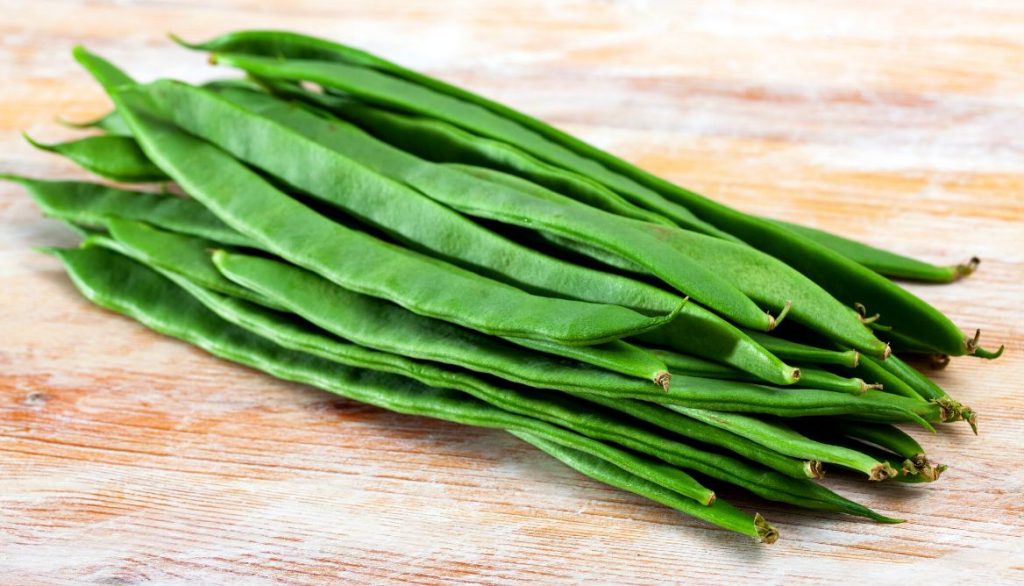
How many bean plants to pick every day? Never pick a few beans! Frequently picking the beans may not reduce the production but instead, it may have the opposite effect. Irregular picking may be the reason the growth or production of the new pods slows down.
7. Birds And Other Feeding Animals
One more serious problem is birds that feed on the flowers and end up damaging the plant. If your garden is usually attacked by birds then it is best to set up a scarecrow or hanging bird scarer that is made from tin foil or any other material set on the canes.
FAQ
How Do You Grow Runner Beans In A Bag?
To grow runner beans in a bag, you will need to use a large, deep grow bag. Fill the grow bag with potting soil and apply a slow-release fertilizer. Plant your bean seeds 1-2 inches deep and water thoroughly. Place your grow bag in an area with direct sunlight, and water regularly.
How Long Does It Take For A Bean To Grow In A Bag?
It typically takes about 70-90 days for runner beans to mature in a grow bag. The exact length of time will depend on the variety of beans, the environment, and the amount of care given to the plants.
How Long Does It Take To Grow Runner Beans?
Runner beans grow quickly but it will take them 7 to 10 days to be transferred outdoors. After being relocated, they will take around two to three months to be able to produce a harvest.
What Beans Grow Best In A Bag?
Runner beans, bush beans, and pole beans are all suitable for growing in a grow bag. However, runner beans are the most popular choice due to their high yield, fast growth, and ease of harvesting.
What Is The Fastest Way To Grow Beans?
The fastest way for beans to grow is to use a grow bag. Grow bags provide a controlled environment for the roots, which helps promote rapid growth. Note: Soaking the beans overnight in water also boosts their growth.
How Much Depth Do Beans Need To Grow?
Beans typically need at least 4-8 inches of soil depth to adequately grow. If you are using a grow bag, choose one that is at least 8 inches deep and 12 inches in diameter. This will provide plenty of room for the root system to grow and thrive.
Conclusion
Among all varieties of beans, runner beans are one of the fastest-growing types. They are a very versatile plant type and they can adapt quickly. Growing them does not take a high level of expertise but consistent maintenance is the key to success.
Keeping in mind that watering, soil quality, fertilizers, and size of the grow bag/pot are some of the most critical requirements you need to balance while growing them.
What creative methods did you use while growing the runner beans at your home? What soil proportions or strategy do you use to boost the yield? Do share your tips in the comments section.
- How to Get Potatoes to Sprout Eyes: Detailed Growing Guide with 3 Options - July 31, 2023
- Weight of a Medium Potato: Revealed in Detailed Guide - July 29, 2023
- Maris Piper Potatoes: 9 Substitutes You Should Know About - July 27, 2023
Hello! I’m Jessica Zander, a garden coach and consultant based in the Boston area (zone 6b), offering virtual consultations across the country and Canada.
I’ve been passionate about gardening since the early 1990s, and in 2022, I launched You Can Do It Gardening to empower individuals to feel more confident in their gardening endeavors.
Following a 30-year career in nonprofit finance and operations, I transitioned out of that field in mid-June of 2023 due to the growing demand for coaching services. Interestingly, my years of presenting financial statements to boards and finance committees proved to be valuable experience for teaching people about gardening! I enjoy sharing skills, providing guidance and suggestions, and collaborating efficiently with clients to make significant improvements to their outdoor spaces, both small and large. I also regularly teach at the Arlington Continuing Education and Cambridge Adult Education.
My approach is direct and practical, akin to Mary Poppins, but tailored to your garden. Clients find satisfaction in saving money and taking pride in their own gardening achievements.

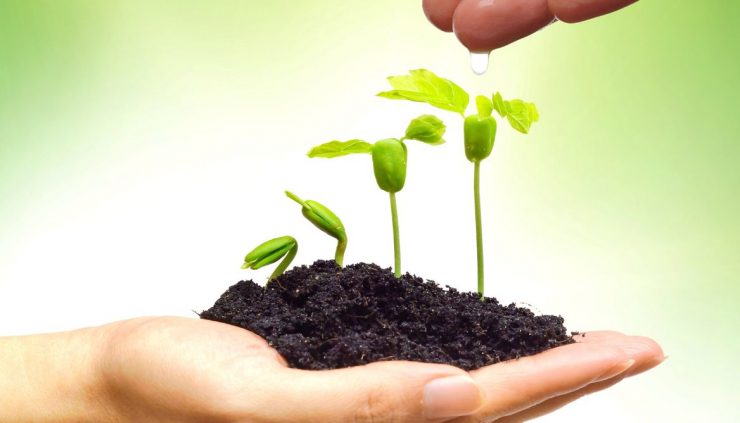






Add comment